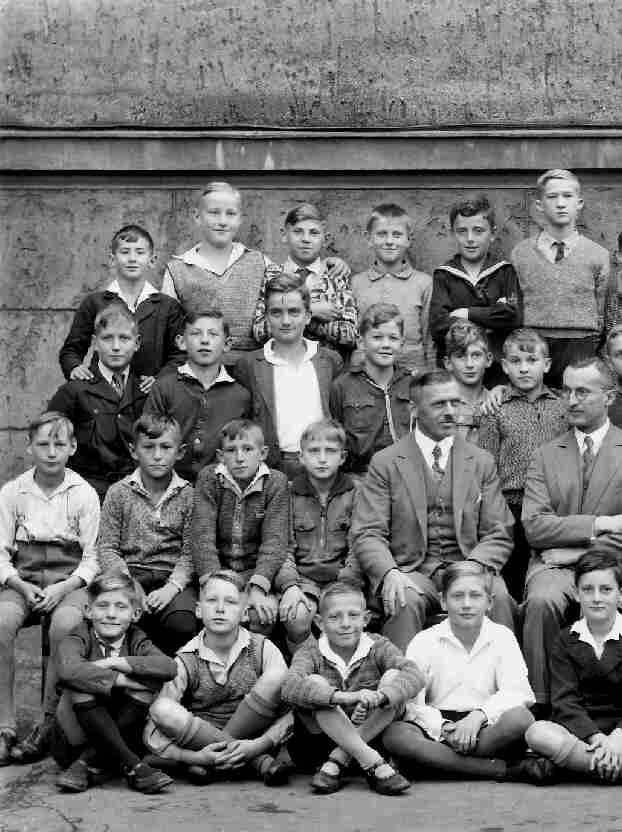
German School Garments durring the Weimar Republic: Chronological Overview

Figure 1.--Here we aee and unidentified school portrait. We would gues that this is a class in the the first or second year of a secondary school. The children wear many common styles from the early 1930s. While the image is undate, we are fairly sure that it is an image from the Weimar era because on of the boys looks to be wearing a Scout uniform.
|
Here we see group photographs showing all the different contemporary garments. We see during the Weimar era a substantiasl shift from early 20th century style to mid-20th century styles. As a result we see styles worn in both periods.We have found a number of German school photographs. Wewould like to archive them by individual school. Unfortunately commonly the school is not indicated. We will archive them here to provide an overview of the different clothes worn. German schools did not have uniforms. The children wore their own clothes and we see quite a wide range of garments. Thus school portraits provide wondeful overviews of the different garments and fashions popular at any given time. ere we will look for portraits that provide a look at school and other groups over time.
Late 1910s (1918-19)
The 1920s
Suits were less common than in the 1920s. A few boys wore suits or suit-like jackets, both with and wiyhout ties. There are usually some boys in every class of primary and early secondary school wearing sailor suits. Sweaters were very common and we notice many different patterns and styles. Most boys wore whire open collar shirts, although the Schiller collar was becoming less common than in the 1920s. Most boys wore short pants to school. Older boys might wear knickers or even long pants in the later years of secondary school. Some boys wore suspenders, but normally under their sweaters. Depending on where in Germany we see boys with h-bar halters. The hosiery we note are mostly long stockings and kneesocks. Here the weather was a factor as well as the boy's age. We note different colors of both kneesocks and long stockings. but relatively little hosiery with patterns. We see few boys wearing ankle socks. Youngr boys usually wore high-top shoes, but we also see closed-toe sandals. Most boys wore low-cut oxfords. We also notice quite a number of boys wearing what look like soft strap shoes which seemed to have been worn rather like American boys wore sneakers. Occassionally we see boys wearing youth group uniforms, we think mostly Scouts.
HBC

Related Chronolgy Pages in the Boys' Historical Web Site
[Main Chronology Page]
[The 1900s]
[The 1910s]
[The 1920s]
[The 1930s]
Navigate the German school pages
[Return to the Main German Weimar school garment page]
[Main school uniform page]
[Main school uniform national page]
[Main German school uniform page]
[Imperial Germany]
[Weimar Republic]
[NAZI era]
[Post-war Years]
[Unified Germany]
Navigate the Relate Boys Historical Clothing Style Pages
[Main country page]
[Long pants suits]
[Short pants suits]
[Lederhosen]
[Kneesocks]
[Eton suits]
[Jacket and trousers]
[Blazer
[School sandals]
Navigate the Boys' Historical Clothing School Uniform Pages
[Main School Uniform Page]
[Australia]
[England]
[France]
[Germany]
[Italy]
[Japan]
[New Zealand]
[Scotland]
[United States]
Navigate the Boys' Historical Clothing Web Page
[Introduction]
[Activities]
[Biographies]
[Chronology]
[Cloth and textiles]
[Clothing styles]
[Countries]
[Topics]
[Bibliographies]
[Contributions]
[FAQs]
[Glossaries]
[Satellite sites]
[Tools]
[Boys' Clothing Home]
Created: 1:47 AM 8/2/2006
Last updated: 1:47 AM 8/2/2006




